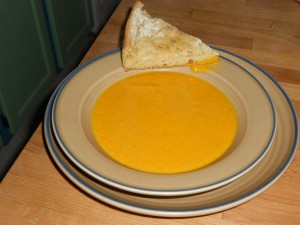Days 1 through 4
I’ve been participating in the Thirty Days of Love campaign over at Standing on the Side of Love. 30 Days began on January 16th (Martin Luther King Jr.’s Birthday, Observed) and continues though Valentine’s Day (February 14th). The idea is “to harness love’s power to stop oppression”. Thanks to the folks of the UUA—Unitarian Universalist Association—for coming up with this program and welcoming everyone, even Episcopalians 🙂 to participate!
Each day I get an email with a suggested action and/or thought project and/or links to helpful information. I’ve been sharing bits and pieces of my reactions to these emails on Facebook. Decided it would be easier to post them here. After all, love is a powerful healer (and healing is what this blog is about)!
For the record, here are Days 1-4:
Day 1: January 16, 2012, Celebration of Martin Luther King, Jr. I read his Letter from Birmingham Jail: “Injustice anywhere is a threat to justice everywhere. We are caught in an inescapable network of mutuality, tied in a single garment of destiny. Whatever affects one directly, affects all indirectly.”
Day 2: Ponder Love “Polish your heart for a day or two; make that mirror your book of contemplation.“—Rumi;
How is love part of your personal identity? I believe that “God is Love” (no exceptions). I take to heart Christ’s message to “Love God. Love Each Other.” It really all boils down to that. I’m not saying that it is always easy. I slip into resentment of other people’s successes. I let people annoy me. But in the end, only love and kindness matter. Peace to you.
Day 3: Embrace Silence and Listen Today’s action was inspired by a mother’s story of frustration with the tone of her children’s voices, only to be told that she talked the same way! That experience prompted her to listen carefully to her own tone. We’re invited to do the same. Could I speak more gently? Am I interrupting? And yes, I know I interrupt too much and talk to loud! I’m taking this one to heart. Read the full story here
Day 4: Ask Yourself: What Do You Struggle With? Oh, so many things: financial fears, health issues, loneliness, despair . . . . Today’s email included the following prayer:
Loving in Fear
Spirit of Life, God of Love, grant me the courage to love boldly in the face of my greatest fears. Grow me in your wisdom and let my actions speak when silence threatens justice and indifference disturbs peace. When gossip, hate, and cruelty arise among friends or in public places, help me bravely walk forward with love. When I defensively assert certainty in the presence of the unknown, grant me the courage to live comfortably in the unanswerable questions of life. Bless me with the eternal gift of not knowing and let it take root in me until it pushes forth shoots of understanding and branches of humility.
—From “Be the Change: Poems Prayers and Meditations for Peacemakers and Justice Seekers,” by Stephen Shick, Skinner House books.
(Note: You can sign up here to receive daily emails during the 30 Days of Love, beginning with the Celebration of Martin Luther King, Jr. on January 16, 2012 and continuing through Valentine’s Day. )
Day 5 and following will appear as separate posts at this blog.






